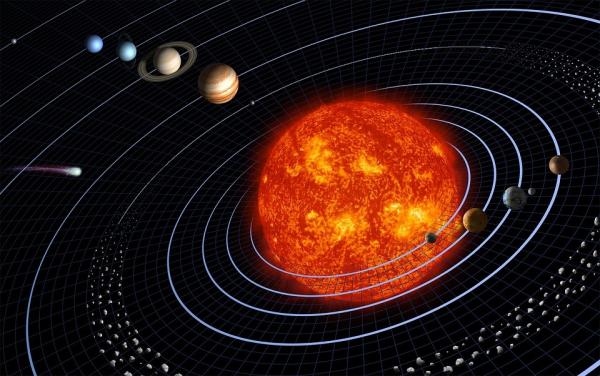Magnet Facts
-
Custom Magnets: Possibilities from Apex Magnets
When your company’s needs, goals, and processes are completely unique, standard magnets aren’t always the right choice. Each company faces distinct challenges that require custom solutions. For that reason, Apex Magnets will work with you to determine the most suitable option for your application while offering customized products for your specific situation. Continue reading → -
From Bars to Spheres: Which Magnet Shape is Best For Your Application?
Magnets come in a wide variety of shapes and sizes – Apex alone offers 450 different types – and each geometric variant has unique benefits. With so many options, it might feel overwhelming to choose. That’s why we created this short guide to help you narrow down your choices. Let’s run through the pros and cons of each common shape: bar, cube, cylinder, disc, block, and sphere. Continue reading → -
Magnets in the Military: From the Sky to the Ground
China is the world’s biggest producer of rare earth magnets, with the United States military being one of its most significant consumers. Historically, the U.S. has spent enormous sums in order to remain the world leader in military technology and ensure a strong presence on the global stage. Continue reading → -
Lightsabers: The Magnetic Truth
Star Wars fans rejoice! Scientists are theorizing how to make fictional lightsabers a reality. Jedis throughout the sci-fi series wield a lightsaber, complex weapon comprised of a focusing ring, main hilt, blade emitter, pommel cap, hand grip, controls, energy core, and, most importantly, a blue or red kyber crystal. Continue reading → -
Saturn's Poles Produce Their Own Auroras
If you haven’t seen the Earth’s aurora borealis in person, you’ve seen pictures – majestic colors that light up the night sky. Planet Earth has so many unique features, like our surface water and abundance of constantly evolving life. But the lights of an aurora? We aren’t the only planet that can boast about them. Did you know that Saturn also produces the phenomenon? However, there’s something different about them. But before we get into that, how does this kind of light show occur in the first place? Here’s a clue: it involves magnets. Continue reading → -
Magnets in Video Tape: Turning Iron Particles into Visuals
In the 1970s, VHS waged a videotape formatting war with the now defunct Betamax, much like the competition between DVD and Blu-Ray within the last decade. VHS may have won out in the end thanks to its affordability, but the format has since been pushed to the limits with today’s streaming, digital, and Blu-Ray technology. Still, VHS technology isn’t completely obsolete –– or, at least, not yet. It’s true the last manufacturer of VCFS ceased production in 2016 after the industry sold about 750,000 units the year before. As for blank VHS tapes, you can still find them on the bottom shelf at a number of electronic stores. While the ever-rolling train of technological revolution leads us to abandon certain products in favor of “the next best thing,” we can’t help but mourn the decline of VHS since these tapes really go the distance when it comes to creatively harnessing the power of magnetism. Continue reading → -
Earth’s Magnetic Field is Actually a Solar-Wind Shredder
At one point in time, Mars – arguably the most similar planet to Earth in our solar system – wasn’t the frozen desert we know today. In fact, researchers suggest that oceans and rivers once existed on its surface before solar winds from the Sun completely wiped them out. Continue reading → -
Did You Know That the Sun's Heliosphere is Actually a Magnetic Solar Bubble?
In its essence, the Sun is considered the heart of our solar system. From Earth’s standpoint, the scorching yellow star of glowing gases directly dictates its seasons, ocean currents, climates and aurorae. If the sun were the size of a front door, Earth would be about the size of a nickel. And without its energy, human life wouldn’t even exist. Crazy to consider, right? However, that example only provides a slight sliver of the Sun’s impact. In actuality, it holds the entire galaxy in place, keeping everything from the largest of planets – Jupiter, Saturn, and Uranus – to the smallest particles of debris in orbit within a magnetic field called the heliosphere that stretches 23 billion miles. Continue reading → -
Recycling Rare Earth Magnets: A New Option for Economical Magnets
One hurdle to acquiring permanent, rare earth magnets is their environmental and economic cost. Mining for elements like neodymium can be difficult, and this relative inaccessibility creates higher prices, especially since much of the mining is completed overseas. Complicating things even further, permanent magnets have also been difficult to recycle, especially because they’re typically used deep inside other products, which makes them hard to access. Continue reading → -
Magnetic Concrete Could Enable Electric Cars to Drive Indefinitely
As early as the 19th century, electric cars were primed to take over the automotive industry and change the face of travel forever, specifically when it came to speed. In fact, an electric car held the land speed record until the early 20th century. However, for the rest of the 1900s, the popularity of electric cars waned, stagnating the progress of electric vehicle technology. In the past two decades, the industry has begun to make a resurgence, but it still has major drawbacks. Similarly to their gas-powered counterparts having to stop and refuel, electric cars have to stop and recharge. Wouldn’t it be great if electric cars were like the latest cell phones though? You could park them on any surface, and they would charge wirelessly –– no cables, no outlets. This is a concept German startup Magment has turned into a reality. Magment’s product, also called “magment,” allows for dynamic charging so that electric cars can recharge while in motion. Theoretically, under the right conditions, you could drive from New York to Los Angeles without making a single pit stop. Continue reading →










